From mild cases of crowded and protruding teeth to more difficult dental problems involving serious malocclusion, overbite or underbite, braces are extremely effective in correcting a wide variety of problems. Certified Specialists in Orthodontics and Dentofacial Orthopedics Dr. Sharma, Dr. Koo and Dr. Lin are experts at diagnosis and will determine the underlying cause of crooked tooth and present you with the best treatment options. While everyone is different, there are some common braces cases that we see frequently.
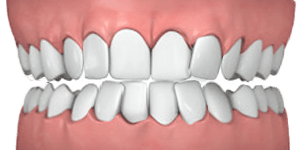
Crowding
Crowding is the lack of space for teeth to fit normally within the jaws. The teeth may be overlapping, sticking out or “blocked out” of line. Crowding occurs when there is an imbalance in the tooth to jaw size relationship, or when the teeth are larger than the available space. Alternatively, crowding can be caused by the early loss of primary teeth or when adult teeth erupt improperly.
Treatment: We create space for crowded teeth by expanding the jaw or recontouring wide teeth to make them narrower, avoiding the need to extract teeth. Dr. Sharma only removes teeth as a last resort.
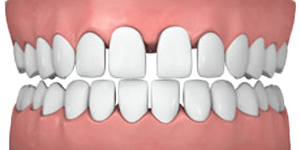
Spacing
Spacing between teeth can be the result of missing teeth, teeth that are too narrow for a wide jaw or certain habits. The most common complaint from those with excessive space is poor appearance but the health of the gums can be compromised if spacing persists for long periods of time.
Treatment: We close the spaces between the teeth. Sometimes, we’ll need the help of a dentist to build up teeth with veneers if the space is too excessive to close with orthodontics alone. Options include metal braces, clear braces or Invisalign®.
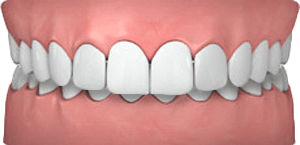
Overjet
Commonly referred to as an “overbite,” this scenario occurs when the front teeth stick out farther than the bottom teeth. This problem is especially common in specific ethnicities including Caucasians and South Asians. The timing for correction of this problem is crucial. If treated early with the use of appliance and braces, there is no need for a complex surgery as an adult.
Treatment: We usually advance the lower teeth using braces or certain appliances that help to reposition the jaws, such as the Twin Block. Treatment options include metal braces, clear braces or Invisalign®.
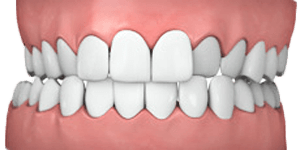
Crossbite
There are two types of crossbites: front and back. It’s very important to correct crossbites as soon as they are detected. If left untreated, crossbites can lead to permanent changes in bone and facial structure.
Front Crossbite: This occurs when one more upper teeth are behind one or more lower teeth. It can be due to trauma, losing baby teeth too early or bad habits, such as nail biting or pen biting.
Treatment: We’ll move the teeth to their intended positions using metal braces, clear braces or Invisalign®.
Back Crossbite: This is when the upper teeth are on the inside of the lower teeth in the back of the mouth. When this occurs, the patient will typically compensate by moving the lower jaw to one side, which can lead to permanent changes in the face and jaws over time.
Treatment: The course of action usually involves the expansion of the upper jaw followed by a period of metal braces, clear braces, or, in some cases, Invisalign®, to make sure everything fits properly.
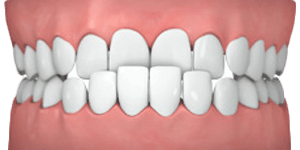
Underbite
This is when the lower teeth sit in front of the upper teeth. Underbites occur when the lower jaw grows at a faster rate than the upper jaw. It’s very important to monitor the patient’s growth in these situations.
Treatment: Beginning at age seven or eight, we’ll advance the upper teeth and jaw with special appliances. If the patient continues to grow into their 20s, then surgery may be necessary. Again, timely treatment is very important to correct this issue in hopes of avoiding surgery.

